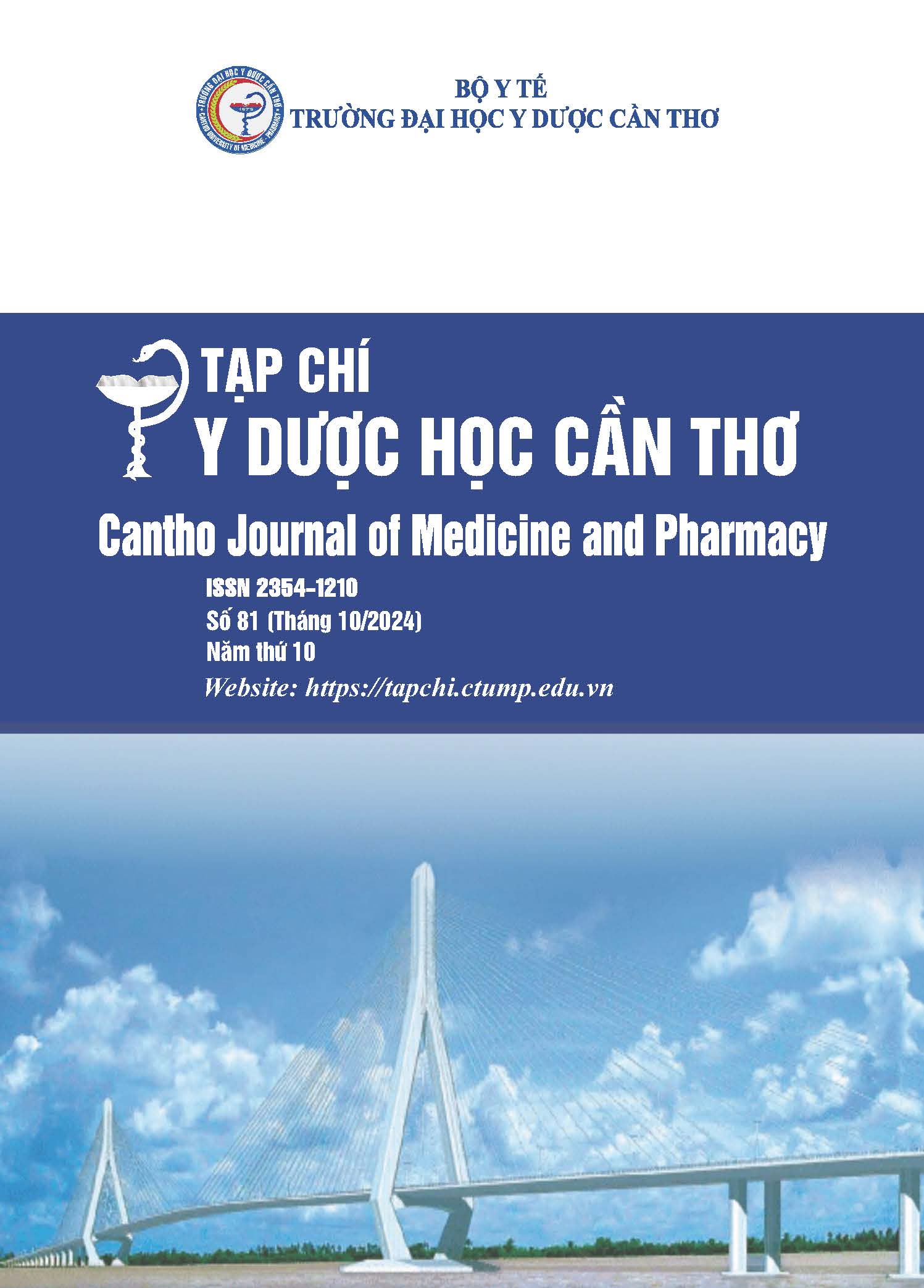DEVELOPMENT A STANDARD FOR FOLIUM PHYSALIS ANGULATA L.
Main Article Content
Abstract
Background: Physalis angulata L. is a wild plant that grows on the banks of rice fields, dikes or abandoned places from North to South in Việt Nam. This is a plant that has been used for a long time and has many effects according to folk medicine such as treating colds, sore throats, coughs with phlegm, breast boils, carbuncles, and scrotal pain in men. This plant is also used to treat viral fever, dengue fever, measles, erythema, chickenpox, and hand, foot and mouth disease. Currently, there is no research on the basic standards for the leaves of the Folium Physalis angulata L. Objective: To develop a basicstandards for raw materials of Physalis angulata L. leaves. Materials and methods: The medicinal material used for research is Physalis angulata L. leaves collected from Kien Giang. The standard base of this plant was developed according to the instructions of Vietnam Pharmacopoeia V. Results: Successfully developed a set of basic standards for raw materials of Physalis angulata L. leaves including: Sensory, microanatomy, powder screening, moisture, total ash, acid insoluble ash, heavy metals, aflatoxins, pesticide residues, qualitative by thin layer chromatography (TLC) and quantitative by UV-Vis spectroscopy. Conclusion: The standard base is application in controlling quality standards of Physalis angulata L. leaves, which has the potential to become a medicinal herb in the future.
Article Details
Keywords
Folium Physalis angulata L., standard base of medicinal herbs
References
2. Bộ Y tế. Dược điển Việt Nam V, Nhà xuất bản Y học Hà Nội. 2017.
3. Đỗ Huy Bích và cộng sự. Cây thuốc và động vật làm thuốc ở Việt Nam tập 2, Nhà xuất bản Khoa học và Kỹ Thuật, Hà Nội.(2006). trang 792-793.
4. Võ Văn Chi. Từ điển cây thuốc Việt Nam. Nhà Xuất Bản Y Học. 2021. Tập II.
5. Cobaleda-Velasco M, Alanis-Bañuelos RE, and et al, “Phenolic profiles and antioxidant properties of Physalis angulata L. as quality indicators”, Journal of Pharmacy &
Pharmacognosy Research. (2017). 5 (2), pp. 114-128
16. Donkor AM, Glover RLK, and et al.“Antibacterial activity of the fruit extract of Physalis angulata and its formulation”, J Med and Biomed Sci. (2012). 1(4), pp. 21-26.
7. Trương Thị Đẹp. Thực vật dược, Nhà Xuất Bản Giáo Dục, Hà Nội. 2007.
8. Saavedra, J. D. C. M., Zaragoza, and et al. “Agromorphological characterization of wild and weedy populations of Physalis angulata in Mexico”. Scientia horticulturae. (2019). 246, 86-94.
9. Sanger, S., Nicklen, S., and Coulson, A.R. “DNA sequencing with chain-terminating inhibitors”. Proc Natl Acad Sci U S A. (1977). 74 (12): 5463–5467.
10. Nguyễn Đức Toàn. Bài báo cáo “Đăng ký thuốc dược liệu: Tiêu chuẩn chất lượng”.(2016).


